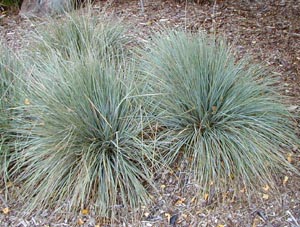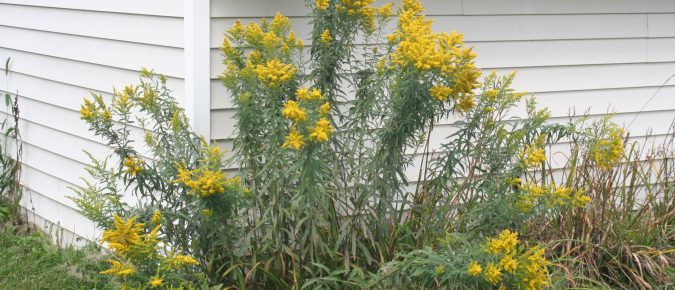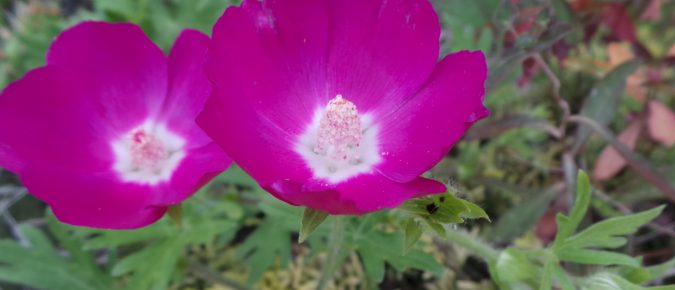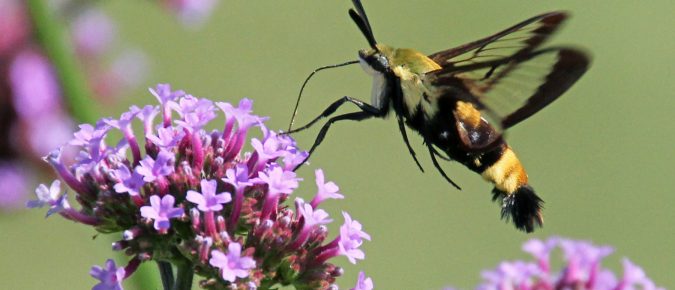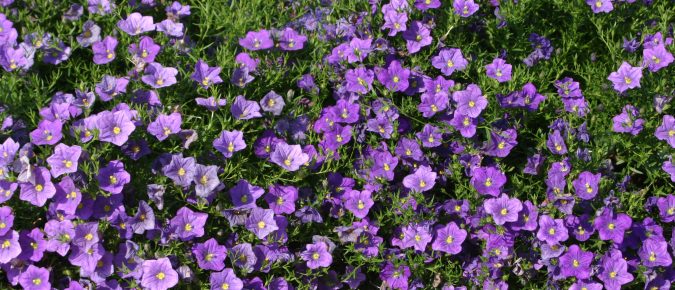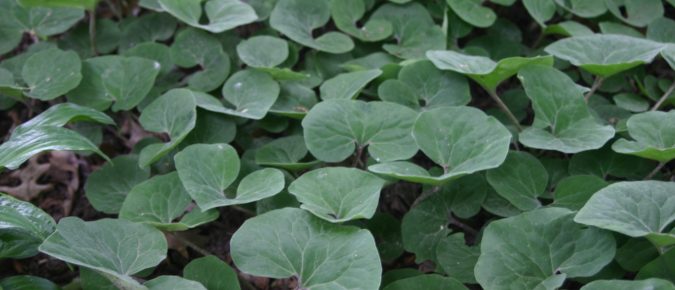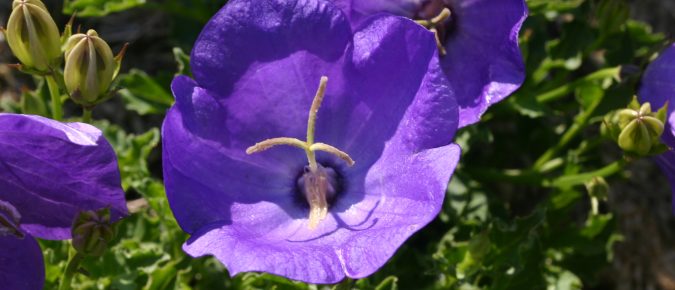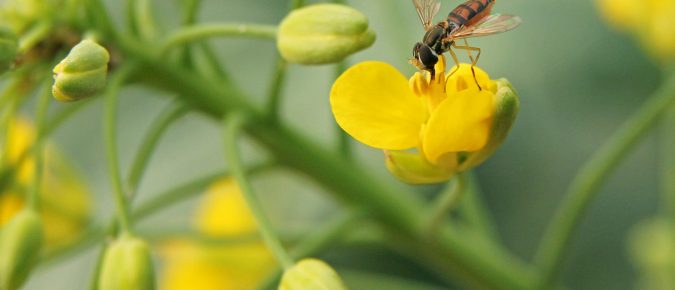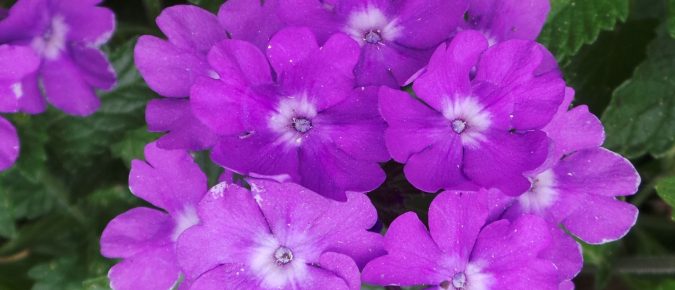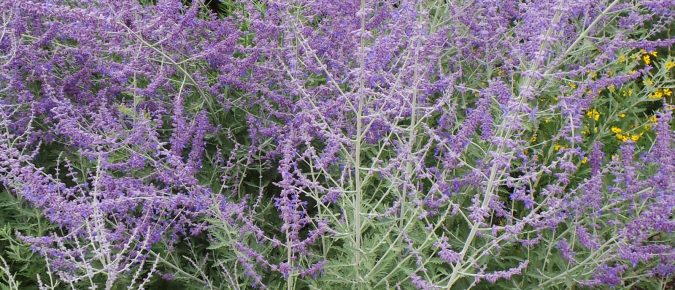With steely blue foliage, blue oat grass is a great compliment to other grasses and many perennials. This cool-season grass is evergreen in mild climates, but the leaves may die back in the Midwest unless protected by snow. It tolerates many types of soils, although it should not remain too wet in winter. To learn more about this easy-care addition to beds and border, read this article…
With a sensational explosion of golden flowers bursting from the plant like skyrockets, ‘Fireworks’ is not your usual goldenrod. This refined cultivar of our native North American Solidago rugosa makes a great focal point in the autumn garden. Hardy to zone 4, slowly expanding clumps grow 3-4 feet tall but rarely need staking. Combine this spectacular plant with purple asters and bright-colored chrysanthemums for a fabulous fall display! Learn more about ‘Fireworks’ in this article…
Brilliant magenta cup-shaped flowers festoon the rambling stems of winecups all summer long. This native prairie plant comes from dry, rocky areas, but tolerates many types of soil. It combines particularly well with other plants that have pink flowers or blue to gray foliage. Learn more about Callirhoe involucrata in this article…
Have you noticed something visiting your flowers, but you aren’t quite sure whether it’s a bee, or a small hummingbird, or a fat butterfly? It’s likely what you saw was a hummingbird clearwing, Hemaris thysbe. It is just one of a number of moths commonly referred to as hummingbird moths. Read this article to learn more…
Nierembergia is not a common plant in the upper Midwest. This perennial in the potato family is only hardy to zone 7, so in colder climates it is grown as an annual. It loves hot, dry weather, so is good for edging along pavement or flagstone, in rock gardens and in containers. To learn more about this plant that flowers in white or purple, read this article…
There are several species of perennial foliage plants in the genus Asarum that make great ground covers for shady sites. European wild ginger and the North American wild ginger are the most commonly used as landscape plants. Both have interesting, but inconspicuous, dark-colored flowers. Learn more about wild ginger in this article…
Campanula carpatica is a low growing herbaceous perennial from the Carpathian Mountains of southeastern Europe. One of the best selections of this species is the ‘Clips’ series. These plants form neat mounds of light green foliage about a foot wide and 6-8 inches tall and remain in clumps that spread only slowly. To learn more about these attractive perennials, read this article…
Are those insects with striped abdomens really all bees? Take a closer look – if they have only one pair of wings, they’re actually a type of fly. Called by various common names, these hover flies or flower flies or syrphid flies are beneficial insects. The adults feed on flowers, but the larvae are important predators of aphids. To learn more about these insects, read this article…
Tall purple flower spikes characterize the several species of Liatris that are used as ornamentals in gardens. This native plant is at home in the border as it is in a meadow or prairie planting. There are several species and varieties of this easy-to-grow herbaceous perennial. Learn more about Liatris in this article…
With its long, airy sprays of purple flowers, Verbena bonariensis is a great addition to the garden. It is a perennial, but only to zone 7. However, it is very easy to grow and will flower the first year from seed, so can be treated as an annual in colder climates. The flowers are highly attractive to butterflies and other insects. To learn more about Verbena bonariensis, read this article…
Looking for a trailing plant with silvery foliage? ‘Silver Falls’ dichondra fits the bill, with shimmering silver leaves on trailing stems. Only hardy to zone 8, it makes a great seasonal plant for containers or planted in the ground as a fast-growing ground cover. Learn more about this attractive foliage plant in this article…
With airy purple-blue flowers and gray-green leaves, Russian sage is a nice addition to the late summer garden. This semi-woody plant can be used as a substitute for lavendar where it is too cold to grow that plant reliably. It combines well with ornamental grasses and white-flowered perennials. To learn more about Russian sage read this article…

